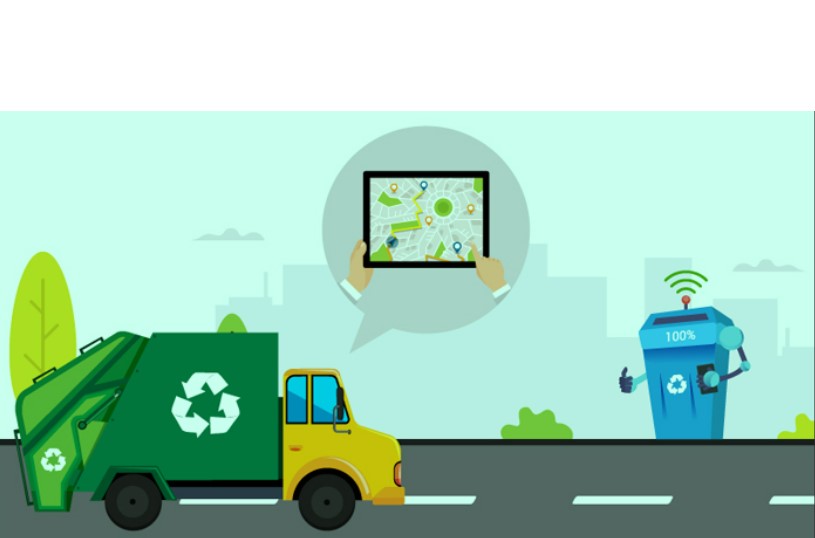In the dynamic landscape of waste management, the integration of Internet of Things (IoT) technologies has brought about transformative changes. This article delves into the world of IoT and waste management, providing an in-depth exploration of its functional and technical aspects. By leveraging smart sensors, data analytics, and real-time monitoring, waste management is entering a new era of efficiency, cost-effectiveness, and environmental consciousness.
IoT and Waste Management: A Holistic Approach
IoT and waste management combine cutting-edge technology with environmental responsibility. This fusion of concepts aims to optimize waste collection, processing, and disposal through intelligent systems.
Smart Waste Bins: Pioneering Efficiency
The cornerstone of IoT-enabled waste management lies in smart waste bins. Equipped with sensors, these bins can detect fill levels, temperature, and even hazardous materials. This data is transmitted to a central system, enabling optimized collection routes and reducing unnecessary trips. Moreover, these bins can notify authorities in case of anomalies, ensuring timely intervention.
Real-time Monitoring: Waste Collection 2.0
Gone are the days of fixed waste collection schedules. IoT allows real-time monitoring of waste bins, dynamically adjusting collection routes based on fill levels.
A centralized management system allows waste management authorities to monitor the entire waste collection network in real time. The system provides insights into fill levels, collection histories, and operational efficiency. By having a comprehensive overview, authorities can make informed decisions to enhance the waste management process continually. This not only cuts operational costs but also minimizes overflowing bins, enhancing the overall cleanliness and aesthetic appeal of the surroundings.
Data Analytics: Unveiling Insights
The heart of IoT-driven waste management lies in data analytics. Collected data provides valuable insights into waste generation patterns, allowing authorities to make informed decisions. This includes optimizing bin placements, identifying recycling trends, and evaluating the success of waste reduction initiatives.
Cost-effective Solutions: Doing More with Less
IoT’s impact on waste management isn’t just about efficiency; it’s also about cost-effectiveness. By streamlining collection routes, minimizing operational expenses, and reducing resource wastage, municipalities, and businesses can achieve substantial savings while upholding their environmental responsibilities.
Technical Aspects of IoT in Waste Management
Sensor Technology: The Eyes and Ears of IoT
Central to IoT-driven waste management are sensors. These compact devices are responsible for capturing and transmitting critical data such as fill levels, temperature, humidity, and even air quality within waste bins. Advanced sensor technologies ensure accurate readings, enabling optimal decision-making.
Connectivity: The Digital Thread
IoT’s effectiveness relies on seamless connectivity. Waste bins equipped with sensors communicate through wireless technologies like LoRaWAN or NB-IoT. This ensures data transmission over long distances while maintaining low energy consumption, extending the lifespan of sensor-equipped bins.
Cloud Infrastructure: Where Data Resides
The data generated by IoT devices is sent to cloud-based platforms for analysis. These platforms collate, process, and visualize the data, offering actionable insights. Cloud infrastructure enables waste management authorities to access real-time information, facilitating swift decision-making and system adjustments.
Data Security: Safeguarding Sensitive Information
With the influx of data comes the paramount concern of security. IoT solutions implement robust encryption protocols to protect sensitive information from unauthorized access. This includes data during transmission, storage, and analysis, ensuring the integrity and privacy of waste management data.
Environmental Impact and Future Prospects
Environmental Benefits: Paving the Way for Sustainability
The amalgamation of IoT and waste management extends beyond efficiency and cost-effectiveness; it nurtures environmental sustainability. By reducing unnecessary waste collection trips, optimizing routes, and encouraging recycling, IoT contributes to minimizing carbon emissions and conserving resources.
Future Trends: Innovations on the Horizon
The journey of IoT in waste management is far from over. Anticipate advancements such as AI-powered predictive analytics, robotic waste sorting, and integration with smart city initiatives. As technology evolves, waste management will continue to align itself with the digital age, creating smarter and greener communities.
Also read: Benefits vs. Challenges of Smart Waste Collection Using IoT
FAQs
How does IoT improve waste management efficiency?
IoT enhances waste management efficiency by enabling real-time monitoring of waste bins, optimizing collection routes, and providing valuable data insights for informed decision-making.
What are the key components of an IoT-enabled waste management system?
An IoT-enabled waste management system comprises smart waste bins with sensors, connectivity technologies like LoRaWAN, cloud infrastructure for data analysis, and robust security measures to protect sensitive information.
How does IoT contribute to environmental sustainability?
IoT reduces carbon emissions by minimizing unnecessary waste collection trips, optimizing routes, and promoting recycling initiatives, thus conserving resources and fostering a more sustainable environment.
What role does data analytics play in IoT-driven waste management?
Data analytics in IoT-driven waste management provides insights into waste generation patterns, recycling trends, and the success of waste reduction initiatives. This data-driven approach guides efficient decision-making.
What are the future prospects of IoT in waste management?
The future holds exciting possibilities for IoT in waste management, including AI-powered predictive analytics, robotic waste sorting, and integration with smart city initiatives, ushering in greener and more innovative waste management practices.
How does sensor technology contribute to IoT in waste management?
Sensor technology is pivotal in IoT-driven waste management as it captures critical data such as fill levels, temperature, and air quality within waste bins. These sensors facilitate data-driven decision-making and system optimization.
Conclusion:
The convergence of IoT and waste management marks a significant leap toward efficiency, sustainability, and innovation. With smart waste bins, real-time monitoring, data analytics, and cost-effective solutions, waste management is no longer just a mundane task; it’s a dynamic and integral part of the digital age. As technology evolves, we can expect IoT to continue reshaping waste management practices, creating cleaner, smarter, and more environmentally conscious communities.
Anupam M is blogging on this site on different aspects of technology, job, and business. He is an experienced IT professional with an Engineering degree from a premier NIT. Know more



